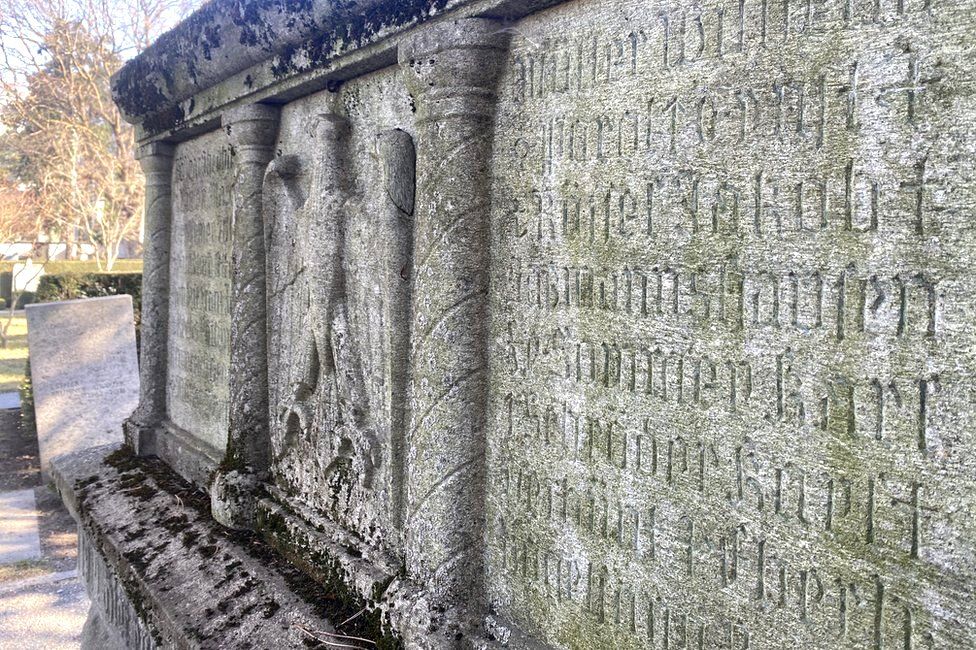For decades the huge monolithic block of granite in the middle of the cemetery in the Swiss town of Chur was ignored by passers-by; no one seemed to know quite what it was.
But the 13-tonne (13,000kg) stone monument that dwarfs the nearby gravestones is now causing controversy – and embarrassment.
Research by a local journalist has revealed links to Nazi Germany, and to neutral Switzerland’s own awkward relations with its World War Two neighbours.
Chur’s cemetery is in the centre of town. Many people, like radio journalist Stefanie Hablützel, pass it every day on the way to work or out shopping.
Nowadays the monument at the cemetery, untended, is covered in moss. The engravings on it are difficult to discern.

“At first sight it looks like a war memorial,” says Stefanie, pointing out some faint lettering: “1914 – 1918; hier ruhen deutsche Soldaten… here lie German soldiers.”
Why, though, would German soldiers be buried here?
In fact, thousands of wounded prisoners of war, French and British as well as German, were treated and interned in Switzerland during World War One. Some died from their injuries, others during the 1918 flu pandemic.
But Chur’s monument was not built until 1938. “That’s 20 years after these men died,” says Stefanie. “It wasn’t built to mourn these dead soldiers, it was built for propaganda reasons, for the Nazi regime.”
Swiss historian, Martin Bucher, explains that, as the Nazis grew in power in Germany, their propaganda involved cult-like worship of their war dead. In the 1930s the German War Graves Commission became part of Hitler’s propaganda machine. Its task, to create visible signs of Nazi power in Germany’s neighbours as well as at home.
There were many thousands of Germans living in Switzerland at the time, and, Martin says, they were organised. “In Switzerland all these organisations you know from Germany existed. The National Socialist Party, the German Labour Front, the Hitler Youth. They were all here, but only for Germans, not for Swiss people.”
Germany’s War Graves Commission submitted ambitious plans to build a vast mausoleum in the Swiss town of St Gallen. This was rejected by Swiss authorities. But the monument in Chur was approved.
Polished and engraved in Munich, using the Fraktur font, a style regularly used in 1930s Nazi Germany, it was delivered to Chur on the eve of World War Two.
At the time Chur’s residents must have known what it was, Martin insists. “On Nazi holidays they put Swastikas on this monument… people would have seen it was a Nazi monument.”
Some were clearly unhappy. Stefanie Hablützel, who has reported on the story for Switzerland’s public broadcaster SRG, uncovered an indignant letter to the local newspaper, written in 1938, asking “why do we have a Nazi stone in our cemetery?”